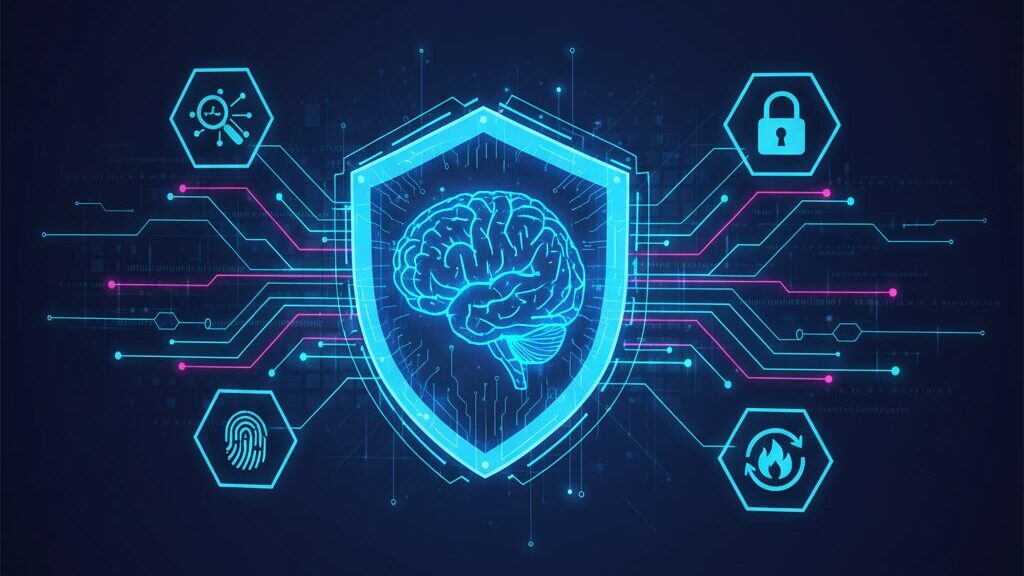Cybersecurity has always been a critical pillar of the digital world, but in 2025, the stakes are higher than ever. As organizations face increasingly sophisticated cyberattacks, Artificial Intelligence in cybersecurity is becoming a powerful ally in defending digital infrastructure. From detecting anomalies in real time to automating incident responses, AI cybersecurity is reshaping how we protect data, systems, and people.
In this blog, we’ll explore what is AI in cybersecurity, the future of this powerful combination, real-world use cases, and how to build the skills needed to thrive in this growing field.
Why Cybersecurity Needs AI More Than Ever
Cyberattacks are growing in scale and complexity. Traditional security methods, which rely heavily on manual rules and static systems, struggle to keep up with:
- Advanced Persistent Threats (APTs) that evolve over time
- Zero-day exploits that bypass known defense mechanisms
- Huge volumes of data from cloud services, IoT devices, and remote work setups
So, can cybersecurity be done by AI? While AI doesn’t replace security teams, it plays a critical role in detecting, predicting, and responding to threats faster than humans alone could.
Top Applications of AI in Cybersecurity
What kind of AI is used in cybersecurity? The field leverages a mix of machine learning, deep learning, and NLP (Natural Language Processing). These techniques analyze massive datasets, detect anomalies, classify threats, and automate security workflows.
Here are some examples of AI in cybersecurity already in action:
1. Threat Detection and Prevention
ML algorithms detect unusual patterns (e.g., login attempts, network traffic spikes) that indicate potential attacks. These systems adapt and learn over time — unlike traditional signature-based systems.
2. Incident Response Automation
AI tools can automatically prioritize alerts, suggest remediation actions, or even autonomously contain threats. This reduces response time drastically, especially in large-scale organizations.
3. Fraud Detection and Identity Protection
AI models identify suspicious financial transactions or unusual user behavior with high accuracy — essential in banking, e-commerce, and digital identity systems.
4. Phishing & Malware Detection
NLP models detect malicious emails, URLs, and phishing attempts more effectively than static rules.
5. Vulnerability Management
AI systems scan and assess vulnerabilities continuously, ranking them by risk level and helping cybersecurity teams focus their efforts efficiently.
These real-world examples of AI in cybersecurity show how the technology is not just theoretical. It’s operational and evolving.
Tools & Technologies at the Intersection of AI and Cybersecurity
Professionals in this field work with a blend of AI/ML frameworks and cybersecurity platforms, including:
- Python (Basic to Advanced)– for automation and model building
- TensorFlow / PyTorch – for training models
- SIEM tools (e.g., Splunk, IBM QRadar)
- Cloud Security – AWS, Azure Security, GCP Security AI tools
- MLOps – for deploying and monitoring models in production
Career Paths & Skills Needed in AI Cybersecurity
As AI cybersecurity jobs grow, hybrid roles are emerging that blend data, AI, and security expertise, such as:
- AI Security Engineer
- Cybersecurity Data Analyst
- Threat Detection ML Engineer
- Security Automation Specialist
Key Skills to Build:
- Programming – Learn Python through WeCloudData’s Python Fundamentals course.
- Machine Learning – Focus on anomaly detection and classification.
- Cybersecurity Fundamentals – Network security, SIEM, incident response.
- Cloud & MLOps – Deploy AI securely at scale.
The Future of AI in Cybersecurity
What is the future of AI in cybersecurity? It’s about autonomous defense systems, smarter predictive models, and seamless integration between AI and human teams. AI will continue to evolve from detection to full-scale automated response, while security professionals focus on strategy, oversight, and complex threat analysis.

According to Cybersecurity Ventures, AI-driven cybersecurity will be one of the most in-demand fields of the decade, blending two high-growth areas: AI and security.
Benefits of AI in Cybersecurity
The benefits of AI in cybersecurity are clear:
- Faster threat detection
- Reduced false positives through adaptive learning
- Scalable security for large organizations
- Automation of repetitive tasks, freeing human analysts for critical work
- Predictive capabilities that anticipate and neutralize threats early
How to Get Started With AI in Cybersecurity
You don’t need a degree to start — a structured path works best:
- Start with Python
- Learn Cybersecurity Basics – Understand networks, vulnerabilities, and common attacks.
- Master Machine Learning – Learn the maths in machine learning and how detection algorithms and data-driven security.
- Dive Into MLOps & Cloud
- Work on Real Projects – For example: phishing detection, anomaly monitoring, or security automation.
Explore WeCloudData’s short courses to build these skills step by step.
Learn AI with WeCloudData
AI in cybersecurity 2025 are converging rapidly, creating smarter, more proactive security systems. For professionals in AI and cybersecurity, this means exciting new career opportunities, cutting-edge projects, and high demand for specialized skills.
Whether you’re learning Python, ML, or MLOps, WeCloudData’s courses give you the tools to launch a future-proof career at the intersection of AI in cybersecurity 2025. If you are an organization looking to upskill your employees in AI, our corporate training is customized to your training needs so you can meet your end goals without much diversion. At WeCloudData, we are committed to bridging the gap between AI and education by offering cutting-edge AI training programs, data science bootcamps, MLOps bootcamp, DevOps track, and machine learning courses.
FAQ
Q1: What is AI in cybersecurity?
It’s the use of machine learning and intelligent systems to detect, analyze, and respond to cyber threats more effectively than traditional methods.
Q2: Can cybersecurity be done by AI?
AI can automate many tasks and assist analysts, but human expertise is still essential for complex scenarios.
Q3: What kind of AI is used in cybersecurity?
Machine learning, deep learning, and NLP are widely applied for threat detection, fraud analysis, and phishing prevention.

